A year of war in Gaza: A timeline of key moments as hostages released in ceasefire deal
Fifteen months after Israel vowed to wipe Hamas ‘off the face of the earth’ following the 7 October attack, a ceasefire has been reached
Your support helps us to tell the story
From reproductive rights to climate change to Big Tech, The Independent is on the ground when the story is developing. Whether it's investigating the financials of Elon Musk's pro-Trump PAC or producing our latest documentary, 'The A Word', which shines a light on the American women fighting for reproductive rights, we know how important it is to parse out the facts from the messaging.
At such a critical moment in US history, we need reporters on the ground. Your donation allows us to keep sending journalists to speak to both sides of the story.
The Independent is trusted by Americans across the entire political spectrum. And unlike many other quality news outlets, we choose not to lock Americans out of our reporting and analysis with paywalls. We believe quality journalism should be available to everyone, paid for by those who can afford it.
Your support makes all the difference.Just days before US president Joe Biden is set to leave office, Israel and Hamas have reached a ceasefire deal after 15 months of war in Gaza.
The Israeli cabinet approved the deal in the early hours of Saturday morning local time, which the Qatari prime minister announced as a three-phase agreement, set to take effect on Sunday. It will include the release of hostages still held in Gaza in exchange for Palestinian prisoners in Israeli jails.
The US, Egypt and Qatar have repeatedly tried to secure a ceasefire ever since the conflict began on 7 October 2023, with both Israel and Hamas rejecting multiple draft proposals.
Here, The Independent takes a look at some of the most significant moments of the war since it began.

7 October 2023: Hamas attacks southern Israel
Hamas, which has controlled the Gaza Strip since 2007, invaded southern Israel, killing around 1,200 people.
The group broke through the border fence and used paragliders and speedboats to attack Israel by land, air and sea, as gunmen took over Israeli military posts, civilian kibbutzes and a music festival.
More than 250 people, including the bodies of some of those killed, were taken back to Gaza, according to Israeli officials.
11 October 2023: Pledge to eliminate Hamas
Israeli defence minister Benny Gantz vowed that Israel would wipe the Palestinian militant group “off the face of the earth” as prime minister Benjamin Netanyahu forged an emergency government to direct the war against Hamas.

13 October: Israel tells over 1m people to evacuate Gaza City
After Israel’s war cabinet ordered a complete siege of Gaza in the wake of the Hamas attack and launched air stikes on nothern Gaza, the Israeli military told residents of Gaza City, where more than 1 million people lived, to move south.
Pictures showed people packing their belongings into cars, onto donkeys and into trucks as they made a perilous journey south to Khan Younis.
Over the course of the next weeks, Israel evacuated most of northern Gaza, beginning a process that was repeated twice more over the next year, with hundreds of thousands displaced in makeshift camps.
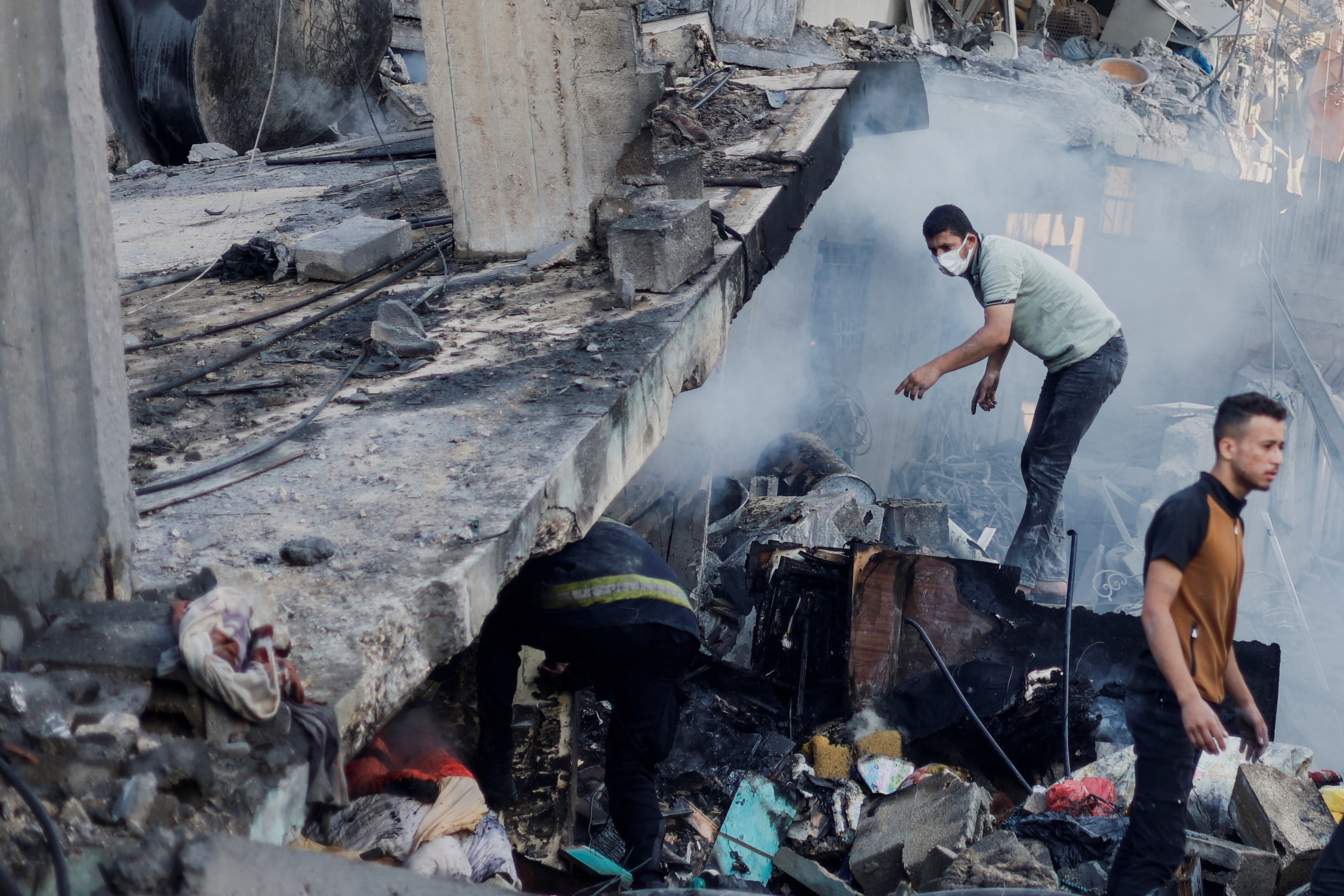
27 October: Israel begins ground offensive
The Israeli military expanded its ground operations despite warnings from the administration of US President Joe Biden that a full-scale assault could cause heavy civilian casualties.
Israeli tanks rolled into Gaza City - an operation the Israeli military said was necessary to dismantle Hamas’s vast subterranean network of tunnels.
A few days later, evacuations began at the Rafah crossing, from Gaza to Egypt, for thousands of foreign passport-holders.
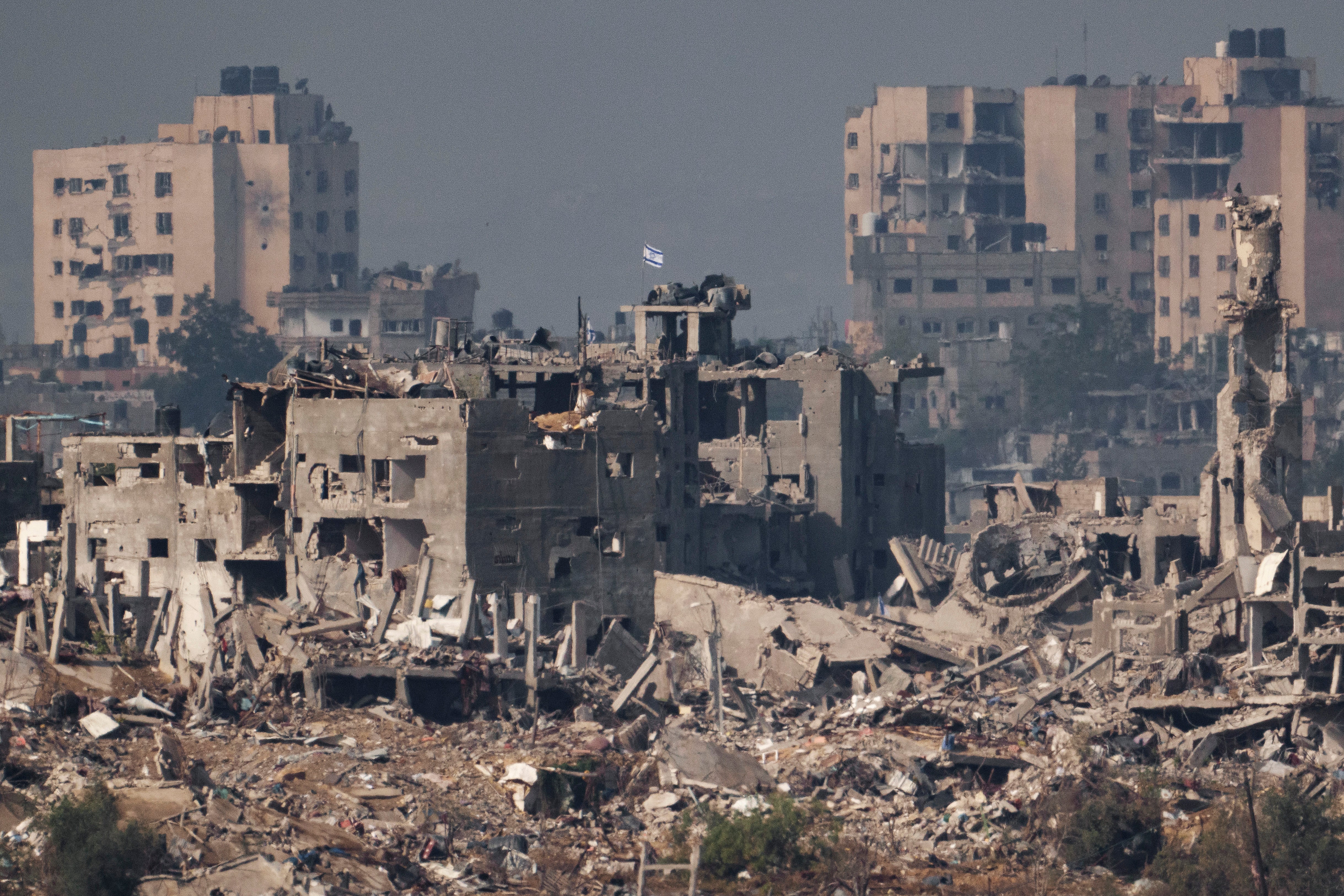
6 November: Palestinian death toll tops 10,000
More than 10,000 in Gaza are killed in the first month of war, according to Gaza’s health ministry. A significant number of the casualties were women and children, UN agencies say.
15 November: Siege of al-Shifa hospital
Israeli troops enter Gaza's biggest hospital, al Shifa, in Gaza City, after a siege lasting several days during which medical staff say patients including newborn babies died from a lack of power and supplies.
21 November: Israel and Hamas announce seven-day truce
Israel and Hamas announce a truce, which will last seven days, to exchange hostages held in Gaza for Palestinians detained by Israel, and let in more aid.
Almost half the 250 hostages - among them women, children and foreigners - are released in return for 240 Palestinian women and teenage detainees.
Israel says it wants only a temporary pause to free more hostages; Hamas says it will free them only as part of a permanent deal to end the war.
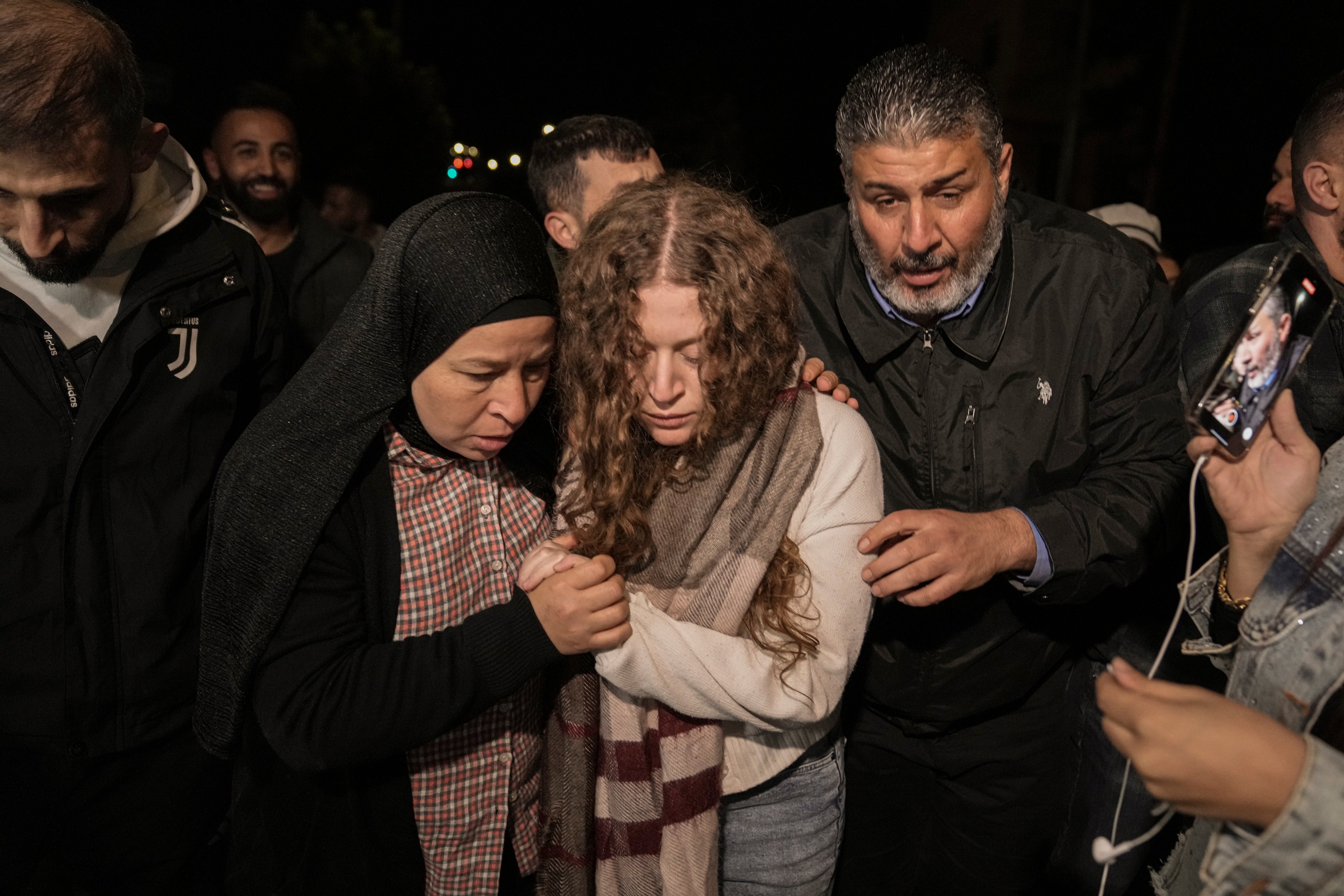
4 December: Israel launches first ground assault on southern Gaza
Israeli forces launch their first big ground assault in southern Gaza, towards the main southern city, Khan Younis.
International organisations say the extension of the war to the entire length of the enclave, including areas already sheltering hundreds of thousands of displaced people, will drastically worsened the humanitarian crisis.
Israel say Hamas leader Yehiya Sinwar, the alleged architect of the 7 October attack, was hiding in tunnels below Khan Younis.
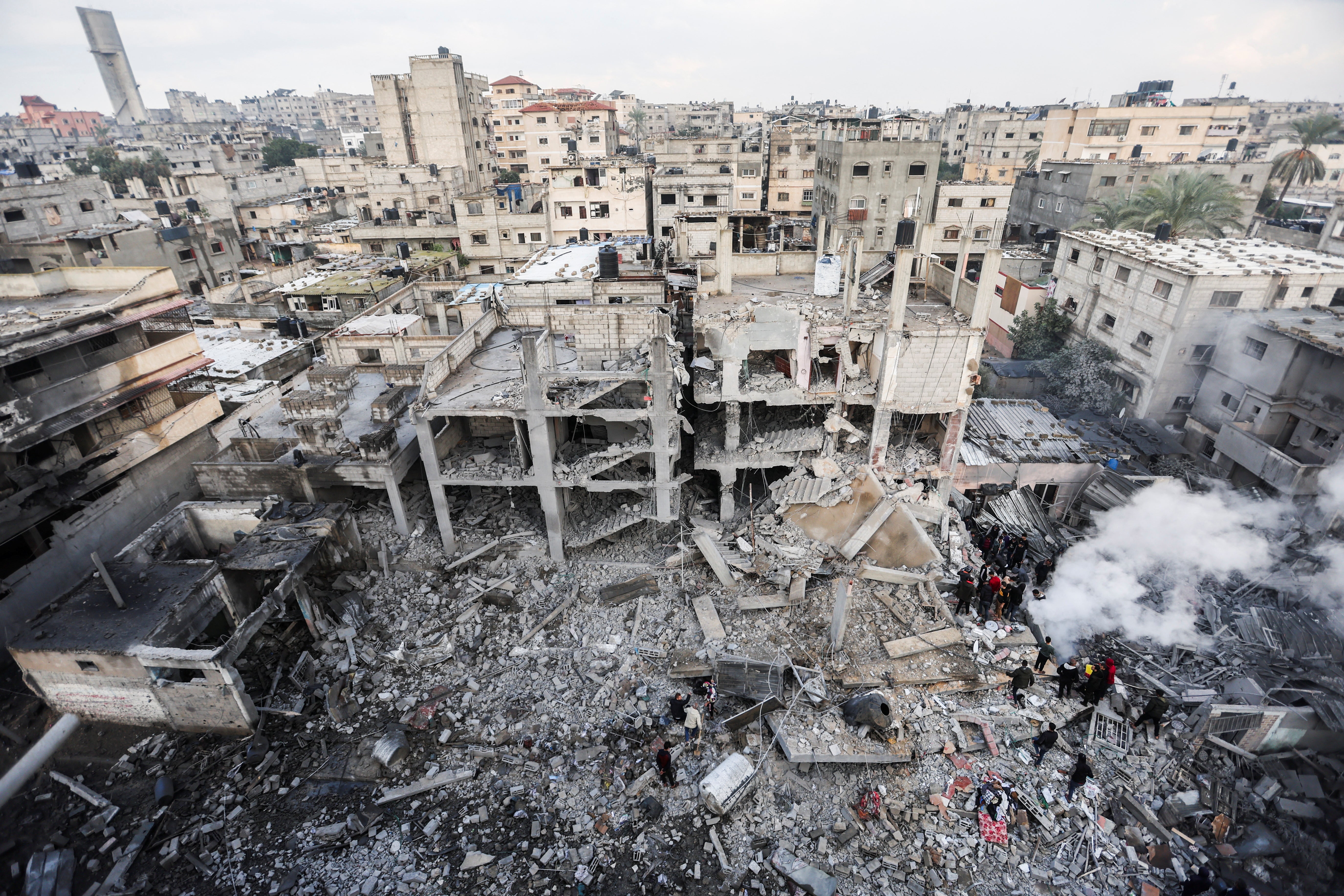
29 February: More than 100 killed in aid convoy chaos
More than 100 Palestinians in Gaza are killed when desperate crowds gather around aid trucks and Israeli troops open fire.
Israel says people died in a crush or were run over by aid lorries, although it admitted its troops had opened fire on what it called a “mob”.
The UN had been warning since the new year that hundreds of thousands of people were facing possible famine in northern Gaza.
25 March: UN resolution calls for Gaza ceasefire
The UN Security Council passes a resolution demanding a ceasefire in Gaza after the US abstains, leading Israel to cancel a high-level visit to Washington.
In the first such demand since the war began in October, the resolution called for an immediate cessation of hostilities for the holy month of Ramadan, of which two weeks remain. A ceasefire does not follow.
1 April: Israeli strikes kill seven World Central Kitchen workers
Israeli airstrikes killed seven World Central Kitchen workers delivering aid in Gaza. The team had clearance from the Israeli military.
President Biden tells Israeli Prime Minister Benjamin Netanyahu that he would reassess US policy if Israel did not immediately address humanitarian conditions and protect aid workers. Israel said it would open more aid routes into Gaza.
Following a military investigation, Israel said the strikes on the aid convoy violated military procedures and were a “grave mistake.” The World Central Kitchen called for an independent investigation.

14 April: Iran launches drones at Israel
Tehran launched over 300 projectiles at Israel in an unprecedented attack on the Jewish strike. Israeli officials said 170 drones, 30 cruise missiles and 120 ballistic missiles were launched.
Iran claimed the barrage was in response to an Israeli strike on the Iranian consulate Damascus, Syria, which killed several Iranian commanders.
Daniel Hagari, a spokesman for Israel’s military, said 99 per cent of the barrage had been intercepted by Israel’s iron dome system.
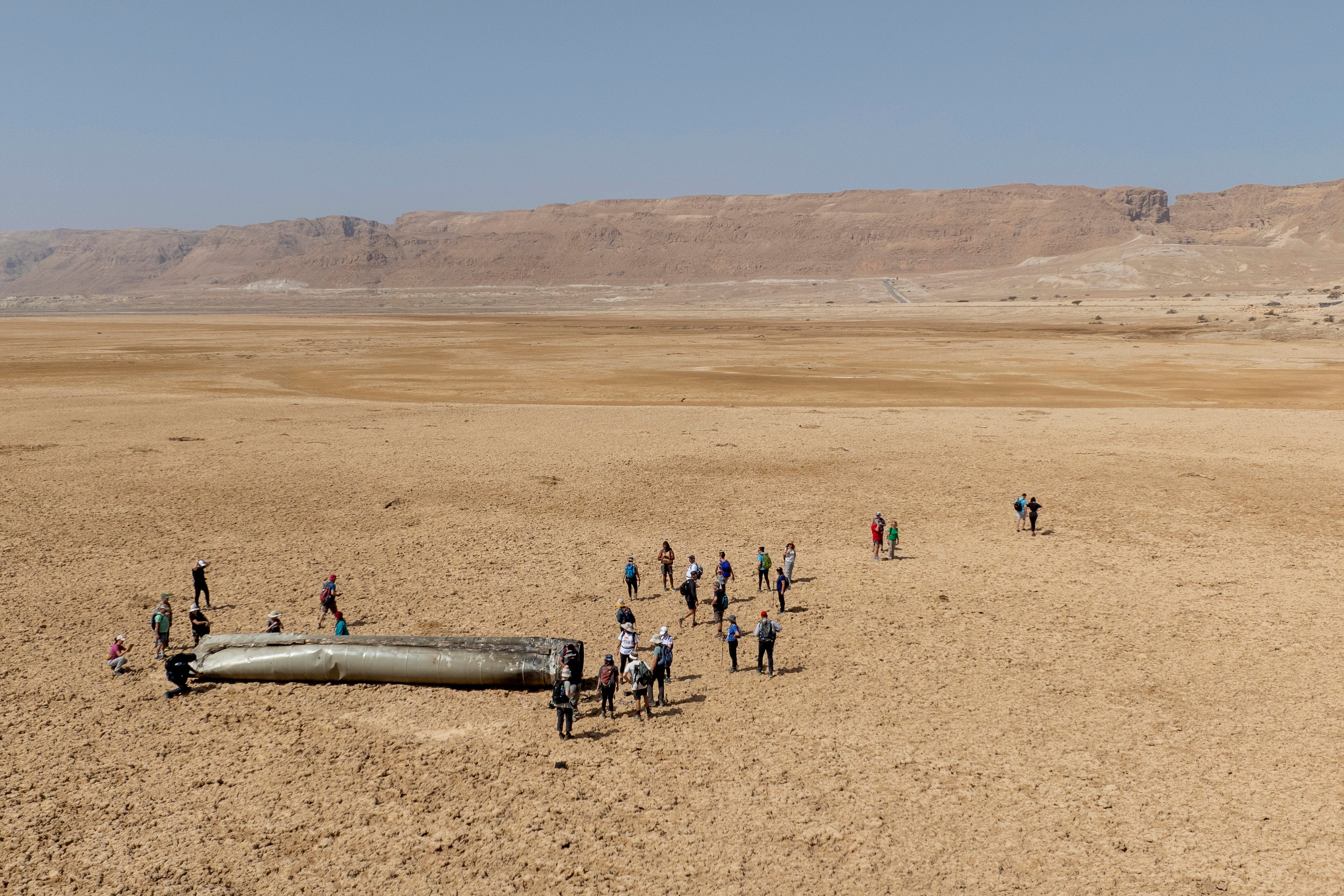
20 May: International Criminal Court issues arrest warrants for Israeli and Hamas leaders
The chief prosecutor at the International Criminal Court (ICC) announced he was seeking arrest warrants for Mr Netanyahu, as well as several Hamas leaders over alleged war crimes.
ICC prosecutor Karim Khan KC issued a statement proposing that arrest warrants should be issued for Mr Netanyahu, Israel’s defence minister Yoav Gallant, Hamas leader Yahya Sinwar, Mohammed al-Masri, Hamas’s military chief, and Ismail Haniyeh, Hamas’s political leader.
It marked the first time in ICC history that a sitting head of state and a sitting defence minister of a country supported by other powerful Western states, including the UK and US, face arrest warrants. Israel denies all the allegations.
Separately, at the UN’s top court, South Africa is in the middle of a legal case against Israel over the war in Gaza, having accused Israel of possible genocide. Israel strongly denies the allegations.
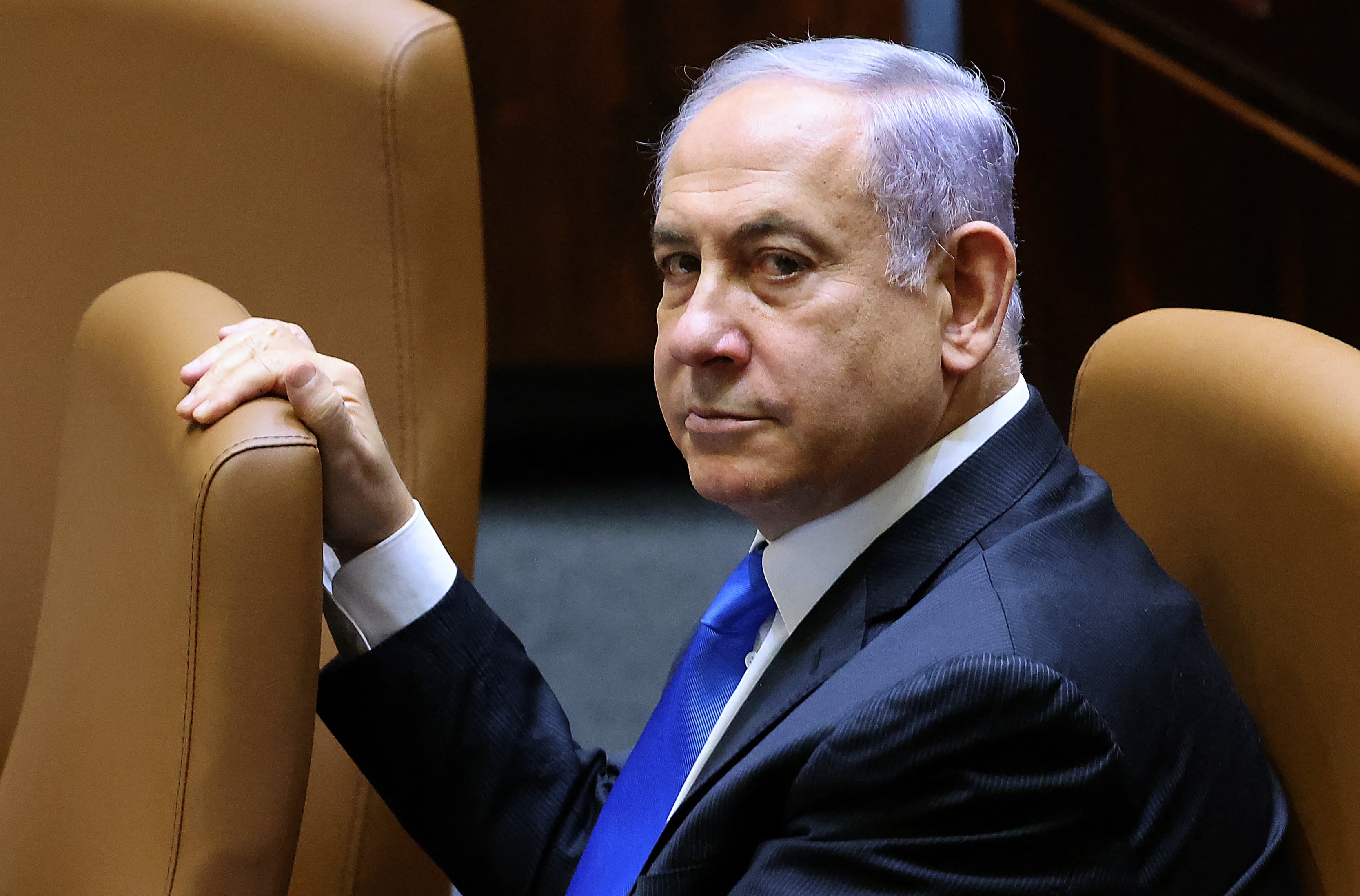
22 July: Israel tells Palestinians to leave Khan Younis
The Israeli military ordered the evacuation of a crowded part of southern Gaza designated as a humanitarian zone.
It said it was planning an operation against Hamas in Khan Younis, including parts of al-Muwasi, a makeshift tent camp where thousands are seeking refuge.
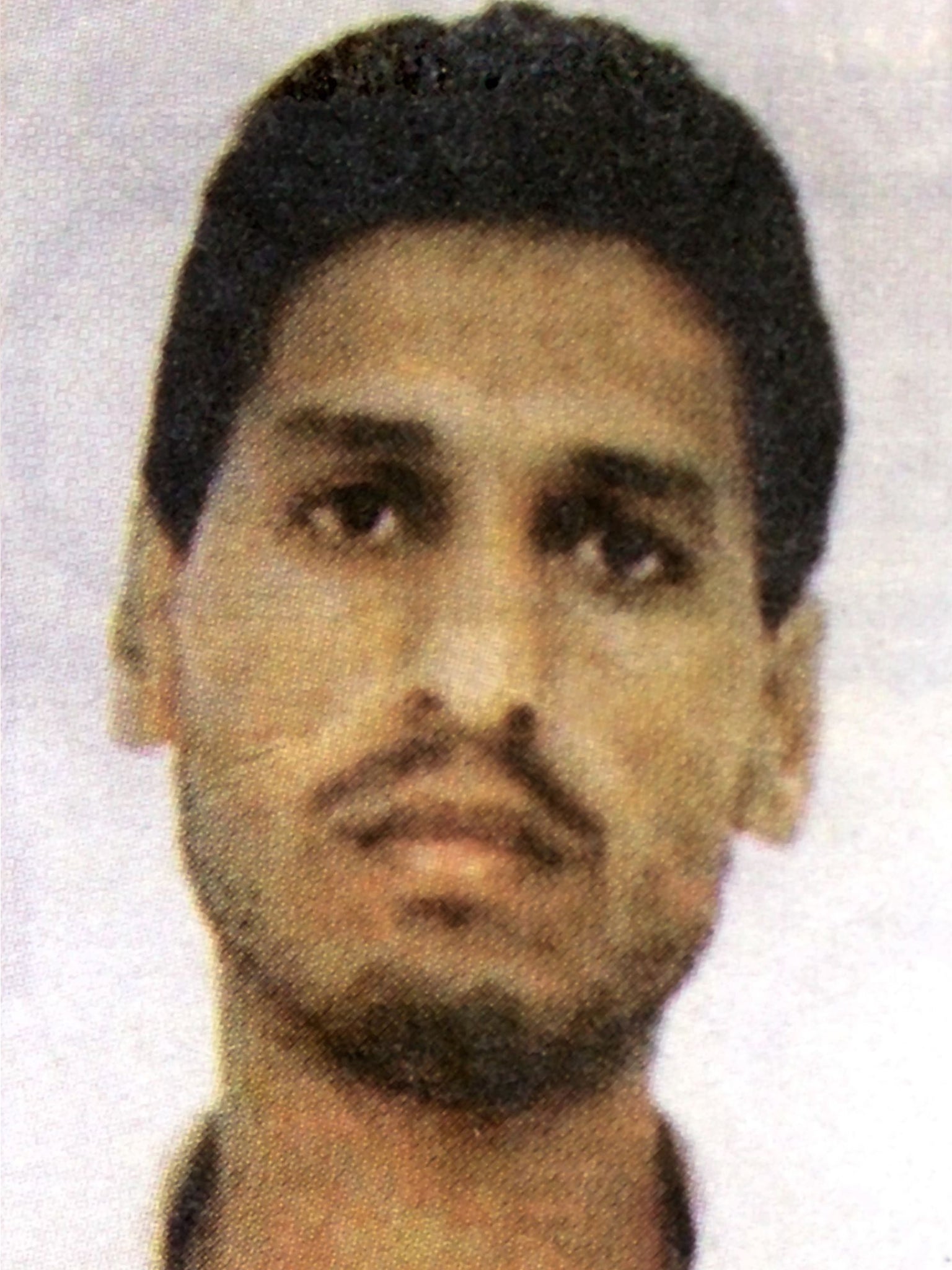
27 July: Golan Heights attack
Mr Netanyahu vows heavy retaliation after a strike in the Israel-occupied Golan Heights kills 12 children.
He blames the Hezbollah group for the rocket, which struck a football field in Majdal Shams. Hezbollah denies having any role in the attack.
Following this, the Israeli military carries out what it says is a retaliatory strike on Beirut and kills Fuad Shukr, a senior Hezbollah commander who Israel says was responsible for the Majdal Shams attack.
31 July: Death of Hamas political chief
Hamas’s top political leader Ismail Haniyeh is killed in Iran. Tehran blames Israel.
Iran’s Revolutionary Guards said Haniyeh and one of his bodyguards were assassinated in the capital Tehran at around 2am local time, Iranian state media reports.
1 August: Israel says it kills Hamas commander Mohammed Deif
The Israeli military confirmed that the head of Hamas‘ military wing, Mohammed Deif, was killed in an airstrike in Gaza in July.
Israel targeted Deif in a 13 July strike that hit a compound on the outskirts of the southern Gaza city of Khan Younis, but there had been no immediate confirmation Deif was killed.
More than 90 other people, including displaced civilians in nearby tents, were killed in the strike, Gaza health officials said at the time.
17 September: Exploding communication devices
On 17 September, the mass explosion of handheld pagers used by Hezbollah members in Lebanon kills 12 people and injures nearly 3,000, sending shockwaves through the region.
Less than 24 hours later, a similar series of explosions hits walkie-talkie radios used by the group.
As Hezbollah reels from the pager and radio explosions, Israel targets Beirut with a series of attacks and kills the Hezbollah’s long-time leader, Hassan Nasrallah.
30 September: Israeli troops enter Lebanon
Israeli forces cross the border to conduct what they call “limited, localised, and targeted ground raids” against Hezbollah - despite calls from its allies to cease fire.
On 1 October, in an anticipated move, Iran launches nearly 200 ballistic missiles at Israel, according to Israel’s army radio, in retaliation for Israel’s campaign against Hezbollah.
Israel is continuing its airstrikes across Lebanon, and ground operations in the south.
7 October 2024: Israel marks a year since Hamas attacks
Israel goes silent to mark a year since the 2023 Hamas attacks - and attention again falls on the hostages who remain in captivity.
18 October: Hamas confirms the death of its leader, Yahya Sinwar
Yaha Sinwar, mastermind of the 7 October attack, was killed by the Israeli military during an operation inside Gaza.
26 October: Israel strikes Iranian military sites
About a week after Sinwar’s death, Israel launched its long-anticipated response to Iran’s 1 October missile barrage. The Israeli air force hit Iranian military sites in three waves of airstrikes.
6 November: Netanyahu fires defence minister
In a move branded as “madness” by the opposition, Mr Netanyahu fired defence minister Yoav Gallant.
The pair had previously made up two of the three core members of Israel’s war cabinet, alongside opposition figure Benny Gantz before it was disbanded. They had fallen out after disagreements over how best to free the remaining hostages.
9 November: Qatar threatens to kick Hamas political office out
Qatar officially threatened Hamas’ political office with expulsion if they did not start taking negotiations with Israel, often hosted in the capital Doha, more seriously.
22 November: ICC issues arrest warrants for Netanyahu and Gallant
The International Criminal Court (ICC) issues arrest warrants for Mr Netanyahu, Mr Gallant and Hamas’ military commander Mohammed Deif. Other senior Hamas officials for whom notices had been considered had died during that period of investigation.
27 November: Israel and Hezbollah sign ceasefire
Israel and Hezbollah agree a ceasefire months after Israeli troops invaded and a little over a year since the Lebanese militia started firing drones and missiles across the border.
Mid-December: Gaza health officials say death toll surpasses 45,000
Health officials in the Gaza Strip claim the death toll from Israel’s aerial and ground offensive in the area surpassed 45,000.
13 January: Ceasefire deal reaches ‘pivotal’ stage
Mediators hand the final draft of a peace deal to Israeli and Hamas officials after both sides say there has been significant progress.
14 January: Blinken says deal ‘on the brink’
Negotiations start to enter the final stage, with US secretary of state Antony Blinken claiming the ceasefire was “right on the brink”.
“I believe we will get a ceasefire,” US secretary of state Antony Blinken said. “It’s right on the brink. It’s closer than it’s ever been before.”
Israel’s national security minister also made a last-ditch effort to quash the truce, mediated by the US, Qatar and Egypt.
Ben Gvir revealed he had repeatedly foiled a hostage and ceasefire deal with Hamas over the past year and urged finance minister Bezalel Smotrich to join him in halting the new agreement.
15 January: A ceasefire and hostage release deal is reached
After hours of back and forth, the Qatari prime minister met Israeli and Hamas officials separately in his office.
Shortly after 5pm UK time, news filtered through that the deal had been done.
President Biden said: “I’m deeply satisfied this day has finally come for the sake of the people of Israel and the families waiting in agony, for the sake of the innocent people in Gaza, who suffered unimaginable devastation because of the war.
“The Palestinian people have gone through hell. Too many innocent people have died. Too many communities have been destroyed. With this deal, the people of Gaza can finally recover and rebuild.”
It didn’t take long for President-elect Donald Trump to post on Truth Social: “We have a deal for the hostages in the Middle East. They will be released shortly. Thank you!”
“With this deal in place, my National Security team, through the efforts of Special Envoy to the Middle East, Steve Witkoff, will continue to work closely with Israel and our Allies to make sure Gaza NEVER again becomes a terrorist safe haven,” Mr Trump said in a second post.
16 January: Netanyahu accuses Israel of reneging on deal
Benjamin Netayahu claimed Hamas had “reneged” on parts of the ceasefire deal and was trying to extort last-minute concessions - plunging talks into a “last-minute crisis”.
He said his cabinet would not meet to vote on the ceasefire until “Hamas accepts all elements of the agreement”, in a move that threatened to derail months of work to end the brutal 15-month conflict.
Hamas said a few minutes after the Israeli announcement that the group was committed to the ceasefire agreement, as US secretary of state Antony Blinken admitted there was a “loose end” to iron out.
After a day of uncertainty, Netanyahu said the deal had finally been reached and he would convene his security cabinet on Friday to approve the long-awaited truce.
Israel, Hamas, the United States, and Qatar officially signed the deal in Doha late on Thursday, Israeli media reported.
17 January: Cabinet votes to approve the deal
The Israeli government approves a ceasefire deal with Hamas on Friday, meaning the final aspect of a peace negotiation has been given the all clear.
The cabinet was convened after Israeli Mr Netanyuhu’s security cabinet concluded a meeting by recommending the deal be approved.
Israel releases the names of 737 prisoners who will be released in the first phase of the deal, which is set to come into effect at 8.30am local time (6.30am GMT) on Sunday, the Qatari foreign ministry spokesman said.
Airstrikes have continued in Gaza just hours ahead of a ceasefire truce, with a family killed inside the al-Mawasi “humanitarian zone” and another killed near Khan Younis.
18 January: Netanyahu threatens to continue fighting
On Saturday morning, rocket sirens sounded in Tel Aviv after a missile was launched from Yemen, with the IDF confirming it had been intercepted by Israel’s Air Force.
With just hours to go until the ceasefire is due to come into effect, Mr Nethanyahu says Hamas is refusing to release the names of the three hostages due to be released on Sunday.
He issues a statement warning that Israel reserves the right to continue fighting, with the support of the US, if Hamas do not follow through on the terms of the ceasefire.
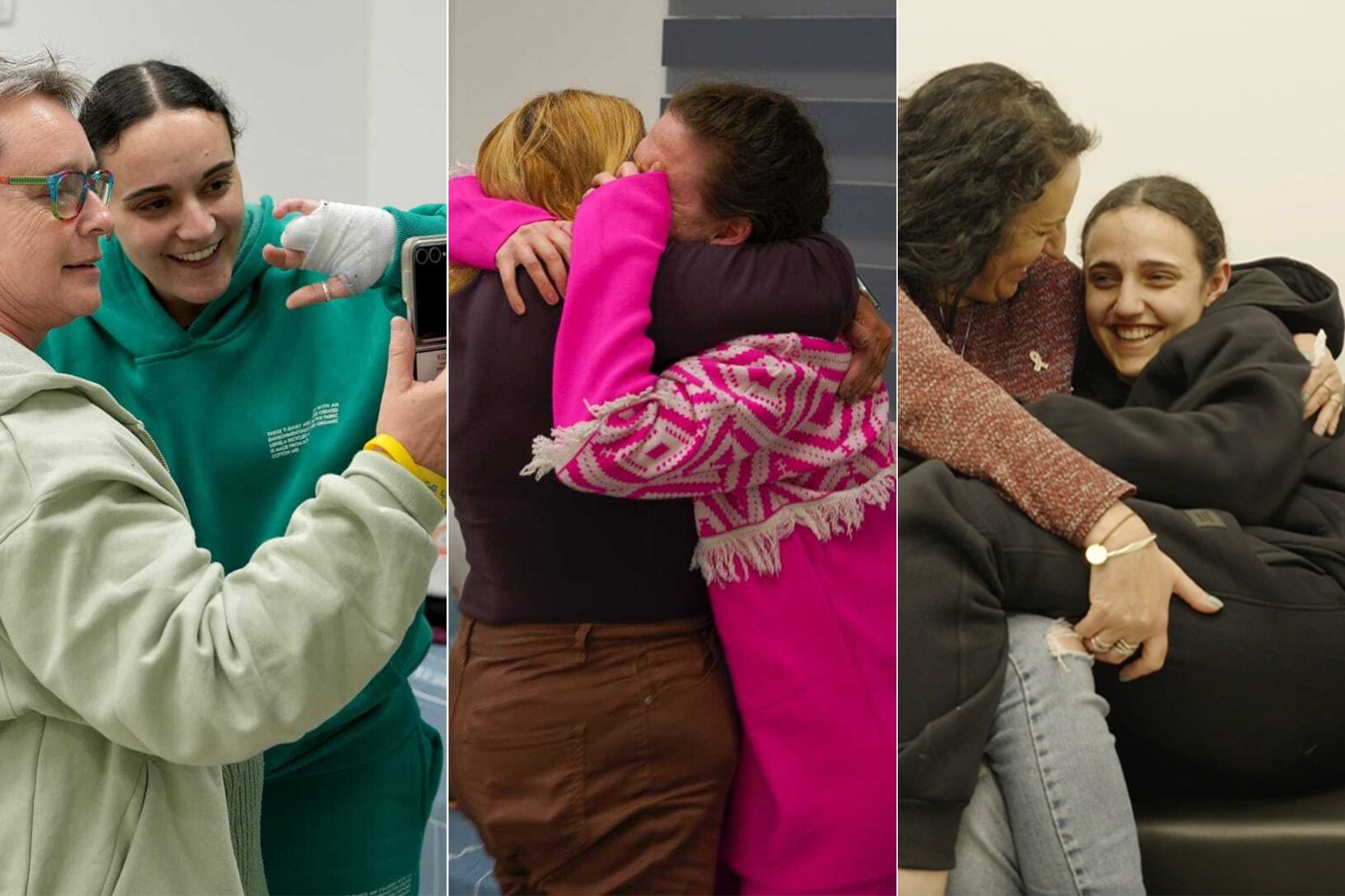
19 January: Three Israeli hostages reunited with families
After three hours of delays and fears that the deal would fall apart at the last minute, the ceasefire goes ahead at around 11.15am on Sunday. The first three hostages released from Gaza arrive in Israel later that day for tearful reunions with families.
Footage shows 28-year-old Emily Damari, 24-year-old Romi Gonen and 31-year-old Doron Steinbrecher in a tense handover to the Red Cross on a Gaza City street.
They were surrounded by a crowd of thousands, accompanied by masked, armed men wearing green Hamas headbands. The women are taken to Israeli forces and then into Israel, where their mothers were waiting.
The three women were in stable condition, Sheba Medical Center said, and authorities release footage of them reuniting with their families, hugging fiercely and sobbing. Israel’s military also release images showing Damari raising a bandaged hand in triumph. It said she lost two fingers in the attack that sparked the war.
At least seven people are injured after Israeli security guards reportedly fired tear gas and rubber bullets at Palestinian families waiting for their relatives outside Ofer Prison.
The Palestine Red Crescent Society reports that the injuries came as people gathered outside the military prison in the West Bank where 90 Palestinian prisoners were set to be released.
24 January: Hamas set to name next four hostages to be released
Hamas said it would provide Israel on Friday with the names of the next four hostages that will be released on Saturday as part of the fragile ceasefire agreement in the Gaza war.
The first three hostages, Romi Gonen, 24, Doron Steinbrecher, 31, and Emily Damari, 28, were released at the weekend, alongside 90 prisoners, and four more hostages are set to be released on Saturday, but have not yet been named by Hamas.
Speaking to the Al-Araby news outlet, Hamas leader Zaher Jabarin said, “Tomorrow we will give the mediators the names of the four hostages who will be released.”
Relatives of hostages still being held by militants in Gaza called on Israeli prime minister Benjamin Netanyahu on Friday to ensure all remaining captives are freed.
Ayelet Samerano, whose son Yonatan Samerano is among those still being held, said: “I call from here to the Prime Minister and negotiating team - you’re doing excellent work - do whatever is necessary to bring everyone back, to the last hostage,”
Samerano said. “We ask you to ensure phase two of the deal is agreed upon before finishing the current phrase. We cannot continue living in uncertainty. All hostages must return, and none of them has time left.”

Join our commenting forum
Join thought-provoking conversations, follow other Independent readers and see their replies
Comments